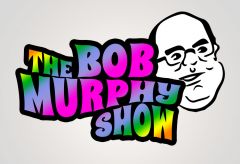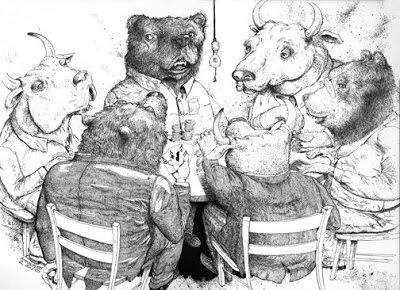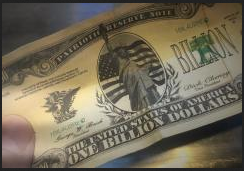According to a popular way of thinking, the central bank can influence the rate of economic expansion by means of monetary policy. It is also held that this influence carries a price, which manifests itself in terms of inflation. For instance, if the goal is to reach faster economic growth and a lower unemployment rate then citizens should be ready to pay a price for this in terms of a higher inflation rate. Note that inflation is defined by a popular way of thinking as increases in the prices of goods and services. It is held that there is a tradeoff between inflation and unemployment, which is described by the Phillips curve. (A.W. Phillips described a historical relationship between the rate of unemployment and the corresponding rates of wage increase in the
Topics:
Frank Shostak considers the following as important: 6b) Mises.org, Featured, newsletter
This could be interesting, too:
Nachrichten Ticker - www.finanzen.ch writes Die Performance der Kryptowährungen in KW 9: Das hat sich bei Bitcoin, Ether & Co. getan
Nachrichten Ticker - www.finanzen.ch writes Wer verbirgt sich hinter der Ethereum-Technologie?
Martin Hartmann writes Eine Analyse nach den Lehren von Milton Friedman
Marc Chandler writes March 2025 Monthly
According to a popular way of thinking, the central bank can influence the rate of economic expansion by means of monetary policy. It is also held that this influence carries a price, which manifests itself in terms of inflation. For instance, if the goal is to reach faster economic growth and a lower unemployment rate then citizens should be ready to pay a price for this in terms of a higher inflation rate. Note that inflation is defined by a popular way of thinking as increases in the prices of goods and services.
It is held that there is a tradeoff between inflation and unemployment, which is described by the Phillips curve. (A.W. Phillips described a historical relationship between the rate of unemployment and the corresponding rates of wage increase in the United Kingdom from 1861 to 1957).1
Given that by popular thinking, the increases in wages are associated with increases in the momentum of prices of goods and services it is now commonly accepted to portray the increases in the momentum of prices versus the unemployment rate.
The lower the unemployment rate the higher the annual growth rate of prices. Conversely, the higher the unemployment rate the lower the growth rate of prices is going to be, so it is held.
The events of the 1970’s came as a shock for most economists. Their theories based on the supposed tradeoff suddenly became useless. During the 1974–75 period, a situation emerged where the growth momentum of prices strengthened whilst at the same time the pace of economic activity had been declining. This unexpected event was labelled as stagflation. In March 1975, US industrial production fell by nearly 13 percent while the yearly growth rate of the consumer price index (CPI) jumped to around 12 percent.
Likewise, a large fall in economic activity and galloping increases in the growth rate of the CPI was observed during 1979. By December of that year, the yearly growth rate of industrial production stood at nil while the growth rate of the CPI closed at over 13 percent. Again, the stagflation of 1970’s was a surprise to most economists who held that a fall in economic growth should be accompanied by a fall in the inflation rate and not an increase.
Also, currently we are observing the possible emergence of the process of stagflation with the yearly growth rate of the CPI closing at 4.9 percent in May against 0.2 percent in May 2020 whilst the unemployment rate rose to 5.9 percent in June from 5.8 percent in May this year.
Can Economic Reality Be Perceived through Correlations?
It is generally held that by means of statistical and mathematical methods one can organize historical data into a useful body of information, which in turn can serve as the basis for the assessments of the state of an economy. It is also held that the knowledge secured from the assessment of the data is likely to be of a tentative nature since it is not possible to establish the true nature of the facts of reality.
According to Milton Friedman, since it is not possible to establish “how things really work,” then it does not really matter what the underlying assumptions of a theory are. On this way of thinking, what matters is that the theory can yield good predictions.
On this Friedman wrote,
The ultimate goal of a positive science is the development of a theory or hypothesis that yields valid and meaningful (i.e., not truistic) predictions about phenomena not yet observed…. The relevant question to ask about the assumptions of a theory is not whether they are descriptively realistic, for they never are, but whether they are sufficiently good approximation for the purpose in hand. And this question can be answered only by seeing whether the theory works, which means whether it yields sufficiently accurate predictions.2
For instance, an economist forms a view that consumer outlays on goods and services are determined by personal disposable income. Based on this he constructs a model, which is validated by means of statistical methods. The model is then employed in the assessments of the future direction of consumer spending.
If the model fails to produce accurate forecasts, it is either replaced, or modified by adding some other explanatory variables. What matters here is how well consumer outlays are correlated with various variables in order to secure a good predictive model. In this sense, all that an economist requires is to establish a good fit between the dependent variable and various other variables.
However, is it valid to accept or reject a theory on the basis of its capability of making accurate forecasts? For instance, we can say confidently that, all other things being equal, an increase in the demand for bread will raise its price. This conclusion is true, and not tentative.
Will the price of bread go up tomorrow, or sometime in the future? This cannot be established by the theory of supply and demand. Should we then dismiss this theory as useless because it cannot predict the future price of bread?
On Friedman’s way of thinking, we form our view regarding the real world based on how well the various pieces of information are correlated with each other. Observe however, that by establishing good correlation between personal consumer outlays and the various pieces of historical data, one does not really explain the underlying driving causes of consumer outlays, one just describes things.
Likewise, by stating that changes in the momentum of the CPI are inversely correlated with the unemployment rate one does not establish the cause behind the change in the momentum of prices of goods and services. One only describes that during a particular period the unemployment rate and the momentum of prices had an inverse correlation.
Now, consider a situation when the stock market follows an uptrend over several years. As a result, an analyst has concluded that it is possible to make large profits by following the barking of a dog. If the dog barks, three times, it is a signal to buy and if the dog barks once, it is a sell. Should such a framework be accepted as a valid theory because it makes accurate forecasts?
As long as the framework is not based on sound thinking—can withstand the test of logic—one runs the risk of being badly hurt financially. We hold that contrary to the popular way of thinking the criteria for selecting a model is not how well it worked in the past but whether it is theoretically sound.
Theory Must Precede Data
To make sense of the historical data we must have a theory, which stands on its own feet, and did not originate from the data as such. The heart of such a theory is that it must originate from something real that cannot be refuted. For instance, a theory that rests on the foundation that human beings are acting consciously and purposefully complies with this requirement.
The statement that human beings are acting consciously and purposefully cannot be refuted, for anyone that tries to do this, does it consciously and purposefully i.e. he contradicts himself. (He consciously sets a goal to refute that human beings act consciously and purposefully).
Ludwig von Mises, the founder of this approach labelled it praxeology. Using the knowledge that human beings are acting consciously and purposefully, Mises was able to derive the entire body of economics.
Consequently, Mises concluded that contrary to the natural sciences where the true causes are not known to us, in economics the knowledge that human beings are acting consciously and purposely permits us to ascertain what the underlying true causes are. On this way of thinking, the causes emanate from human beings themselves. According to Mises,
The physicist does not know what electricity “is”. He knows only phenomena attributed to something called electricity. But the economist knows what actuates the market process. It is only thanks to this knowledge that he is in a position to distinguish market phenomena from other phenomena and to describe the market process.3
Also on this Rothbard said,
One example that Mises liked to use in his class to demonstrate the difference between two fundamental ways of approaching human behavior was in looking at Grand Central Station behavior during rush hour. The “objective” or “truly scientific” behaviorist, he pointed out, would observe the empirical events: e.g., people rushing back and forth, aimlessly at certain predictable times of day. And that is all he would know. But the true student of human action would start from the fact that all human behavior is purposive, and he would see the purpose is to get from home to the train to work in the morning, the opposite at night, etc. It is obvious which one would discover and know more about human behavior, and therefore which one would be the genuine “scientist.”4
Economic Activity and Inflation
Contrary to popular thinking, strong economic activity as such does not cause a general rise in the prices of goods and services and economic overheating. Observe again according to the Phillips curve an increase in economic activity, or a decline in the unemployment rate is associated with a rising momentum in the prices of goods and services.
Regardless of the rate of unemployment, as long as every increase in expenditure is supported by production no overheating can occur. The overheating emerges once expenditure rises without the backup from production—for instance, when the money stock is increasing.
Once money increases it generates an exchange of nothing for something, or consumption without preceding production, which leads to the erosion of wealth. Increases in the money stock are followed by rises in the prices of goods and services, all other things being equal.
Note that prices are another name for money that people spend on goods they buy. If the stock of money in an economy increases while the amount of goods remains unchanged more money will be spent on the given amount of goods i.e., prices will increase, all other things being equal.
Conversely, if the stock of money remains unchanged, it is not possible to spend more on all the goods and services; hence no general rise in prices is possible, all other things being equal. By the same logic, in a growing economy with a growing amount of goods and an unchanged money stock, prices will decline.
We suggest that because of recent massive increases in the growth momentum of money supply, the yearly growth rate of the CPI, which stood at 4.9 percent in May, is likely to strengthen visibly ahead. Note that the yearly growth rate of our measure of money AMS increased from 6.5 percent in February 2020 to 79 percent by February 2021.
Summary and Conclusions
It is held by some commentators that there is a tradeoff between inflation and unemployment, which is described by the Phillips curve. The lower the unemployment rate, the higher the inflation rate. Conversely, the higher the unemployment rate the lower the inflation rate is going to be, so it is held.
Note that prices are another name for money that people spend on goods they buy. If the stock of money in an economy increases while the amount of goods remains unchanged, more money will be spent on the given amount of goods i.e., prices will increase, all other things being equal.
We suggest that on account of recent massive increases in the growth momentum of money supply the yearly growth rate of the CPI, which stood at 4.9 percent in May is likely to strengthen visibly ahead.
Observe that the yearly growth rate of our measure of money AMS increased from 6.5 percent in February 2020 to 79 percent by February 2021.
We suggest that those analysts that insist to follow the Phillips curve in order to ascertain the future course of the momentum of prices of goods run the risk of seriously deceiving themselves.
Observe that for some commentators what matters is to make accurate forecasts regardless of whether the reasoning is sound or not.
- 1. A.W. Phillips, “The Relation between Unemployment and the Rate of Change of Money Wage Rates in the United Kingdom, 1861–1957,” Economica, n.s., vol. 25, no. 100 (November 1958): 283–99.
- 2. Milton Friedman, Essays in Positive Economics (Chicago: University of Chicago Press, 1953), pp. 7 and 15.
- 3. Ludwig von Mises, Human Action: A Treatise on Economics, scholar’s ed. (Auburn, AL: Ludwig von Mises Institute, 1998), p. 355.
- 4. Murray N. Rothbard, preface to Theory and History: An Interpretation of Social and Economic Evolution, by Ludwig von Mises (Auburn, AL: Ludwig von Mises Institute, 2007), p. xvi.
Tags: Featured,newsletter








